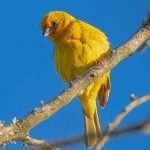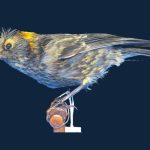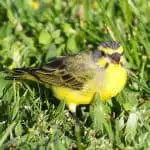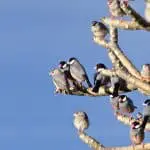Common Name: Northern Mockingbird
Scientific Name: (Mimus polyglottos)| Size | Diet | Range in Hawaii | Status in Hawaii |
|---|---|---|---|
| 8 in. - 10 in. | insects and arthropods | O'ahu, Maui, Moloka'i, Lana'i, Kaho'olawe, and Big Island | Least Concern |
The Northern Mockingbird, also known as Mimus polyglottos, is a bird species that is native to North America. However, it has also been introduced to other parts of the world, including Hawaii, where it has become a naturalized resident. Despite being a non-native species, the Northern Mockingbird has been long established in Hawaii, and can be found in a variety of habitats on the islands.
In this article, we will explore more about the Northern Mockingbird, its unique characteristics, and its presence in Hawaii.
Northern Mockingbird
Appearance
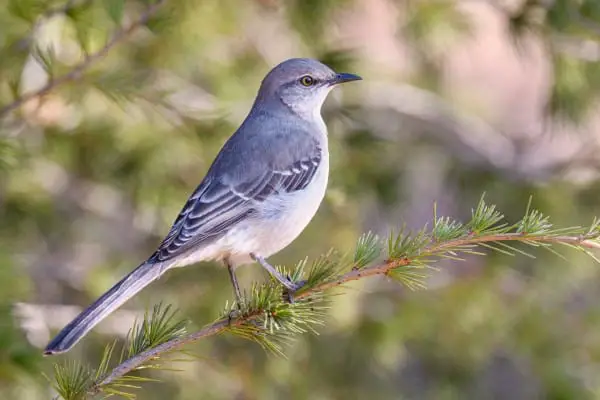
The Northern Mockingbird is a striking songbird renowned for its captivating appearance. With a length ranging from 8 to 10 inches (20 to 25 centimeters), it boasts a medium-sized stature that catches the eye. Its plumage is predominantly gray, featuring a sleek and elegant look.
The bird’s slender body is adorned with a variety of eye-catching details. Its wings exhibit flashes of white, which become strikingly visible during flight and add a touch of brilliance to its overall appearance. The tail feathers also sport white patches, enhancing the bird’s aesthetic appeal.
One cannot overlook the Northern Mockingbird’s distinctive facial features. It possesses a sleek black bill that contrasts beautifully against its light gray face and throat. The bird’s black eyes shine with a curious and intelligent gleam, reflecting its alert and perceptive nature.
Diet
These clever songbirds are omnivorous, meaning they consume a wide range of food items. In their quest for sustenance, Northern Mockingbirds primarily rely on insects and arthropods, including beetles, ants, grasshoppers, and spiders. They are skilled foragers, hopping from branch to branch or scanning the ground for small invertebrates, which they snatch up with precision.
However, the Northern Mockingbird’s culinary repertoire extends well beyond insects. They are known to indulge in a variety of fruits and berries, such as mulberries, blackberries, and grapes.
Nesting
The Northern Mockingbirds typically build their nests in trees or shrubs, often selecting locations near human habitation. They exhibit a preference for well-concealed spots, such as dense foliage or thorny branches, which provide protection from predators and the elements.
Using a combination of twigs, grasses, leaves, and other plant materials, they construct cup-shaped nests with a sturdy foundation. These nests are carefully woven and held together with spider silk or plant fibers, resulting in a durable and well-insulated structure.
What’s truly fascinating is the Northern Mockingbirds’ defensive strategy to protect their nests. Both males and females are fiercely territorial during the breeding season, defending their nesting sites vigorously. They engage in aerial displays, swooping and diving to deter potential threats from approaching the nest.
The female Northern Mockingbird takes on the responsibility of incubating the eggs, which typically number between 2 to 6. The incubation period lasts around 12 to 13 days, during which the female diligently keeps the eggs warm. The male actively supports the female, providing food and assisting in defending the nest.
Once the eggs hatch, the Northern Mockingbird parents tirelessly feed their hungry offspring. They diligently search for insects, spiders, and other small invertebrates to ensure a protein-rich diet for their growing chicks. The parents’ exceptional mimicry skills also come into play during this period, as they teach their young the intricate songs they are renowned for.
Behavior

One of the most remarkable aspects of the Northern Mockingbird’s behavior is its vocal prowess. They are renowned for their ability to mimic the songs and calls of other birds and even incorporate sounds from their environment. With an astonishing repertoire of melodies, they can imitate not only other bird species but also sounds like car alarms, barking dogs, and even human speech.
Beyond their impressive vocal talents, Northern Mockingbirds are highly territorial creatures. They defend their nesting sites vigorously, engaging in aerial displays and aggressive behavior towards intruders. Their territorial nature is also evident in their persistent defense of food sources and preferred foraging areas.
These resourceful birds are skilled foragers, using their sharp eyes and agile movements to hunt for insects, spiders, and other small prey. They hop along the ground or perch on branches, scanning the surroundings for potential meals. They are known to employ a “watch and wait” strategy, patiently observing their prey before launching into swift and precise attacks.
Another fascinating behavior of the Northern Mockingbird is its tendency to engage in “flight displays.” During courtship, the males perform acrobatic flights, soaring high into the sky, and diving steeply while singing their complex songs. These captivating aerial displays are their way of attracting mates and asserting their dominance.
Additionally, Northern Mockingbirds are highly curious and observant birds. They are known to investigate their surroundings, including human activities, with keen interest. Their inquisitive nature often leads them to explore new objects, imitate sounds they hear, and even engage in playful behavior.
Habitat
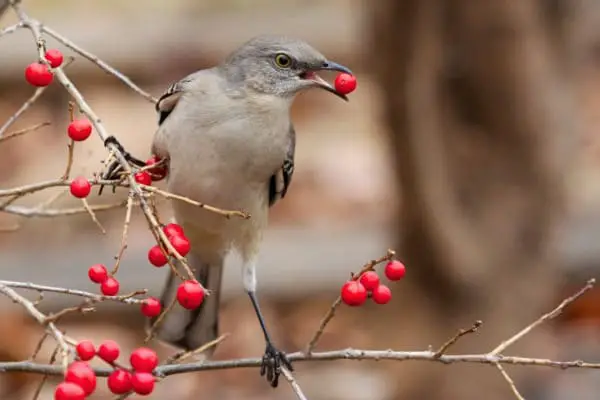
One of the key factors contributing to the Northern Mockingbird’s adaptability is its preference for open habitats with scattered trees and shrubs. They are commonly found in fields, parks, gardens, and suburban neighborhoods where they can easily access food sources and nesting sites.
While they are known to inhabit a wide range of habitats, Northern Mockingbirds show a particular affinity for edges and ecotones. Whether it’s the boundary between a forest and a meadow or the interface of a marsh and a wooded area. Another habitat preference of the Northern Mockingbird is areas with scattered trees or shrubs, such as savannahs, grasslands, and open woodlands.
Range
The Northern Mockingbird has established itself in Hawaii’s Southeastern Islands, including O’ahu, Maui, Moloka’i, Lana’i, Kaho’olawe, and parts of Hawai’i Island. Introduced in the early 20th century for aesthetic purposes and pest control, these naturalized songbirds have adapted to drier habitats and dispersed to various regions.
They can be found in suburban areas, lowlands, residential neighborhoods, and even at higher elevations, such as the slopes of Mt. Haleakala. While their numbers have declined in lusher regions of O’ahu, they continue to be observed primarily in drier regions along the western coastline.
Conservation Status
The Northern Mockingbird enjoys a favorable conservation status and is classified as a species of “Least Concern” by the International Union for Conservation of Nature (IUCN). This status indicates that the population of Northern Mockingbirds is stable and not currently facing significant threats.
Interesting Facts
1. Nighttime serenades
While most birds are quiet during the night, Northern Mockingbirds are known for their nighttime singing. They often perform extended singing sessions during the breeding season, serenading the moonlit hours with their melodious tunes.
2. State bird of several U.S. States
The Northern Mockingbird holds the honor of being the official state bird of five U.S. states: Arkansas, Florida, Mississippi, Tennessee, and Texas. Its melodious songs and charming presence have made it a beloved symbol of these states.
3. Vocal development
Juvenile Northern Mockingbirds undergo an extensive period of vocal practice, imitating and experimenting with various sounds as they develop their own unique repertoire of songs. This learning process can last for several months, allowing them to perfect their mimicking abilities.
4. Nest parasitism
Occasionally, Northern Mockingbirds may fall victim to nest parasitism by Brown-headed Cowbirds. These cowbirds lay their eggs in the mockingbirds’ nests, leaving the mockingbird parents to unwittingly raise the cowbird chicks as their own.
5. Cultural significance
The Northern Mockingbird holds cultural significance beyond its natural history. It has been celebrated in literature, poetry, and music for centuries, symbolizing freedom, creativity, and the power of song. Its distinctive qualities have made it a beloved and iconic species in many cultures.
Frequently Asked Questions
1. Can Northern Mockingbirds imitate human whistling?
Yes, Northern Mockingbirds are known to imitate human whistling. They can accurately replicate a wide range of sounds, including specific tunes and melodies.
2. How long do Northern Mockingbirds live?
In the wild, Northern Mockingbirds have an average lifespan of 8 to 10 years. However, some individuals have been known to live longer.
3. Can Northern Mockingbirds recognize themselves in mirrors?
Studies have shown that Northern Mockingbirds can recognize themselves in mirrors. This ability is considered an indication of self-awareness, which is a cognitive trait found in only a few animal species.
4. How long does it take for Northern Mockingbird chicks to fledge?
After hatching, Northern Mockingbird chicks remain in the nest for about 10 to 15 days before they fledge (leave the nest). They continue to be cared for and fed by their parents for a period of time after fledging.

